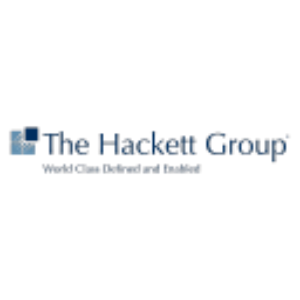The Hackett Group’s Q2 Working Capital Survey Update Finds Companies Reaching Limits of Payment Terms Extensions As They Successfully Navigate Inventory Issues
2021 was a year unlike any other in recent memory, with all three major working capital components improving – companies managed inventory more effectively, collected from customers faster and took longer to pay suppliers. But the first half of 2022 saw several new developments. As a follow-up,
The updated survey is available for download, with registration at this link, and is also covered in this recent episode of The Hackett Group’s “Business Excelleration Podcast.” Here’s a summary of the key findings:
Companies may have reached the upper limits of payment terms extensions. After a slowdown of growth in days payables outstanding (DPO) over the last two quarters, DPO fell by
Despite difficulties, companies maintained inventory performance. Days inventory outstanding (DIO) remained virtually flat during the period, increasing by just
Days sales outstanding – the third major component of working capital performance – was also largely flat during the period, decreasing by
On the operational side, which often drives working capital performance, revenue continued its meteoric rise in Q2, increasing by nearly
“Headwinds will clearly continue to persist for the foreseeable future, and discipline, planning, and foresight when it comes to working capital management can play a key role in helping companies succeed,” said Townsend. “Inventory management presents one of the biggest conundrums for companies today. It’s critical for companies to ensure they can rapidly recognize and respond to changing demand signals. On receivables, companies should continue to review the credit and collections management process, as well as payment terms and contractual milestones. With payables, improving supplier management is key. Supplier criticality, competition for resources, and supply availability may warrant revisiting sourcing, location, and working capital strategies. Contingency planning is also becoming increasingly important, including incorporating risk into the cash/cost/service equation.”
Bodó added, “This is not the time for companies to take their foot off the gas when it comes to working capital and cash flow management. Smart business leaders will double down on capabilities for managing working capital health – increasing their visibility into key indicators, sharing information better across functions and automating processes – to enable agility amid continuing change.”
About
Drawing from our unparalleled IP from nearly 20,000 benchmark studies with the world’s leading businesses – including
More information on
Cautionary Statement Regarding “Forward-Looking” Statements
This release contains “forward-looking” statements within the meaning of Section 27A of the Securities Act of 1933 as amended and Section 21E of the Securities Exchange Act of 1934 as amended. Statements, including without limitation words such as “expects,” “anticipates,” “intends,” “plans,” “believes,” “seeks,” “estimates,” or other similar phrases or variations of such words or similar expressions indicating present or future anticipated or expected occurrences or outcomes are intended to identify such forward-looking statements. Forward-looking statements are not statements of historical fact and involve known and unknown risks, uncertainties, and other factors that may cause the company’s actual results, performance or achievements to be materially different from the results, performance, or achievements expressed or implied by the forward-looking statements. Factors that may impact such forward-looking statements include without limitation, the ability of
View source version on businesswire.com: https://www.businesswire.com/news/home/20221103005166/en/
Source:








